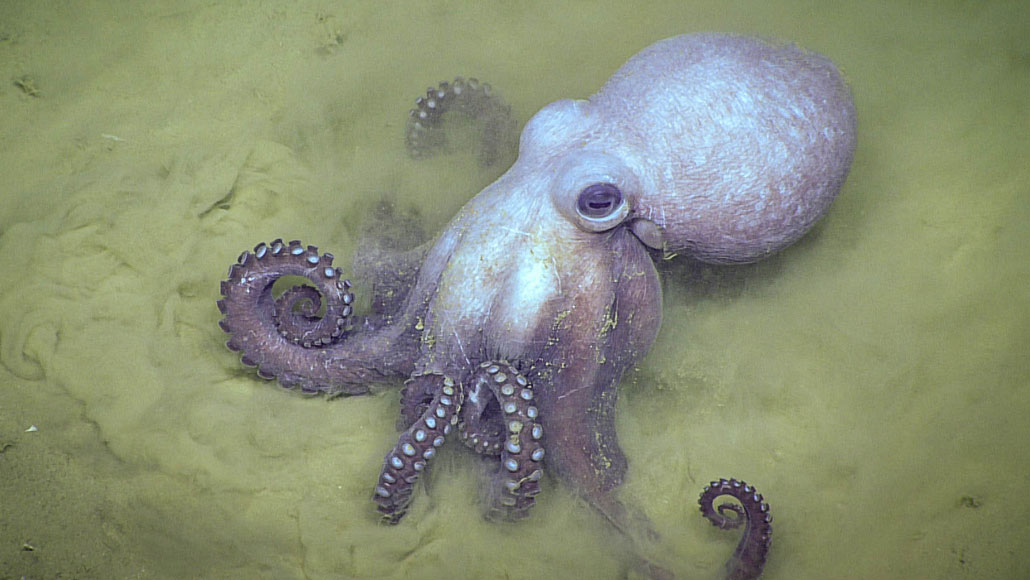Predatory octopuses were drilling into clamshells at least 75 million years ago
Tiny holes in ancient clams push the known date of this behavior back millions of years

Modern octopuses, such as this Muusoctopus johnsonianus in the Gulf of Mexico, use a sharp ring of teeth on their tongues to drill into the tough shells of clams or mussels.
NOAA Office of Ocean Exploration and Research